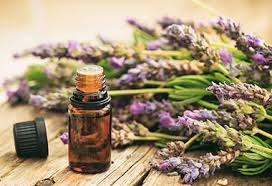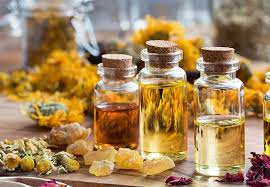Essential oils are concentrated plant extracts used in various industries, including aromatherapy, cosmetics, and food. Processing, packaging, and exporting essential oils involve several critical steps to ensure that the oils remain pure, effective, and compliant with international regulations. Here’s a clear guide on how to manage each phase effectively.
The first step in processing essential oils is extraction. Essential oils are typically extracted from plant materials such as flowers, leaves, stems, or seeds. There are different methods for extraction, including steam distillation, cold pressing, and solvent extraction. Steam distillation is the most common method, where steam is passed through plant material to vaporize the essential oil. The vapor is then condensed back into liquid form, separating the oil from the water.
Cold pressing is used mainly for citrus oils, where the oil is extracted by mechanically pressing the peel. Solvent extraction is employed for delicate flowers where the oil is dissolved in a solvent and then separated from the solvent through evaporation. Each method has its specific requirements and must be carefully controlled to ensure the quality of the essential oil.
After extraction, the essential oil needs to be purified and tested. Purification involves removing any remaining impurities from the oil. This can be done through filtration or centrifugation. Testing is crucial to ensure that the oil is pure and meets quality standards.
Tests may include checking for the presence of contaminants, verifying the concentration of active ingredients, and ensuring the oil’s chemical composition matches the expected profile. This step is important to ensure that the essential oil is safe and effective for its intended use.
Once the essential oil is purified, it is ready for packaging. Proper packaging is essential to protect the oil from contamination and degradation. Essential oils are typically stored in dark glass bottles to shield them from light, which can cause them to deteriorate. The bottles should be tightly sealed to prevent leakage and evaporation.
Labeling is also important; each bottle must be labeled with essential information, including the name of the oil, its botanical source, extraction method, and any safety or usage instructions. Proper labeling ensures that consumers and distributors have all the information they need to use the product correctly and safely.
When exporting essential oils, it’s important to comply with international regulations and standards. Different countries have specific requirements for importing essential oils, which may include documentation such as certificates of origin, phytosanitary certificates, and compliance with international quality standards like ISO or GMP (Good Manufacturing Practices).
The exporter must also ensure that the essential oils meet the importing country’s safety regulations and standards. This may involve submitting samples for testing and obtaining necessary certifications.
Transportation is another critical aspect of exporting essential oils. Essential oils should be transported in a manner that maintains their quality. This typically involves shipping in climate-controlled environments to prevent exposure to extreme temperatures and humidity, which can affect the oil’s quality.
Shipping methods can include air freight for faster delivery or sea freight for larger quantities. Proper handling during transport is essential to avoid damage to the packaging or contamination of the oil.
Upon arrival at the destination, the essential oils must go through customs clearance. This process involves verifying that all documentation is in order and that the oils comply with the importing country’s regulations. Customs authorities may inspect the shipment to ensure it meets the required standards. Once cleared, the essential oils can be distributed to retailers, wholesalers, or directly to consumers.
Processing, packaging, and exporting essential oils require careful attention to detail at every step. From the extraction of the oil to its packaging and transport, each phase must be managed to ensure the quality and safety of the final product.
By adhering to international standards and regulations, producers and exporters can successfully bring essential oils to global markets, satisfying consumer needs and contributing to the growth of the essential oil industry.
How to Process Essential Oils for Exportation

1. Sourcing Raw Materials: Start by sourcing high-quality raw materials, such as herbs, flowers, or fruits, depending on the essential oil you wish to produce. Ensure the plants are fresh and free from pesticides or contaminants.
2. Extraction Method: Choose an appropriate extraction method for your essential oil. Common methods include steam distillation, cold pressing, and solvent extraction. Each method has different implications for the quality and yield of the oil.
3. Steam Distillation: For steam distillation, place the raw material in a still and introduce steam. The steam extracts the essential oil, which is then condensed into a liquid. This method is ideal for oils like lavender and peppermint.
4. Cold Pressing: Cold pressing involves mechanically pressing the raw material, usually citrus peels, to extract the oil. This method preserves the oil’s natural properties and is used for oils like orange and lemon.
5. Solvent Extraction: In solvent extraction, a solvent is used to dissolve the essential oil, which is then separated from the solvent. This method is often used for delicate flowers like jasmine. Ensure the solvent is completely removed from the final product.
6. Filtration: After extraction, filter the essential oil to remove any impurities or plant residues. Use a fine mesh filter or centrifuge to ensure a pure, high-quality oil.
7. Quality Control: Test the essential oil for purity, potency, and consistency. Perform tests such as gas chromatography to ensure the oil meets industry standards and is free from adulterants.
8. Blending: If necessary, blend the essential oil with carrier oils or other essential oils to achieve the desired aroma or therapeutic effect. Ensure that the blending process maintains the oil’s quality.
9. Bottling: Bottle the essential oil in dark glass containers to protect it from light and air, which can degrade the oil. Use airtight caps to prevent leakage and maintain freshness.
10. Documentation: Prepare the necessary documentation for export, including certificates of analysis, safety data sheets, and any required health certifications. Accurate documentation ensures compliance with international regulations.
Read Also: 18 Medicinal Health Benefits Of Alchornea glandulosa (Christmas bush)
How to Package Essential Oils for Exportation

1. Selecting Packaging Materials: Choose high-quality packaging materials that protect the essential oil from light, air, and temperature fluctuations. Dark glass bottles are preferred for their protective qualities.
2. Bottle Types: Use dark glass bottles, such as amber or cobalt blue, to shield the essential oil from UV light. Ensure the bottles are airtight to prevent oxidation and leakage.
3. Filling Bottles: Fill the bottles carefully to avoid spillage. Use clean, sterilized equipment to prevent contamination. Leave a small air gap at the top of the bottle to accommodate any expansion.
4. Sealing: Seal the bottles with airtight caps to prevent leakage and maintain the oil’s potency. Ensure that the seals are secure and tamper-evident to ensure product integrity.
5. Labeling: Label each bottle with essential information, including the oil’s name, batch number, expiry date, and any required safety warnings. Include handling instructions and export documentation.
6. Packing for Shipping: Place the bottled essential oils in protective packaging, such as bubble wrap or foam inserts, to prevent damage during transit. Use sturdy outer cartons to ensure safe delivery.
7. Insulating: For international shipments, use insulated packaging if necessary to protect the essential oil from extreme temperatures. This is especially important for oils sensitive to heat or cold.
8. Palletizing: Organize the packed cartons on pallets for easier handling and shipping. Secure the cartons with stretch wrap or strapping to prevent movement during transport.
9. Documentation: Include all necessary export documents, such as invoices, certificates of origin, and health certificates. Ensure that the documentation is complete and accurate to avoid delays.
10. Final Inspection: Conduct a final inspection of the packaged essential oils to ensure that all packaging, labeling, and documentation are correct. Address any issues before shipping to ensure a smooth export process.
How to Export Essential Oils for Profits
1. Market Research: Research potential markets to understand demand, pricing, and competition. Identify target markets with a high demand for essential oils and favorable trade conditions.
2. Compliance and Certification: Ensure compliance with international regulations and obtain necessary certifications, such as organic or fair trade certifications. Certifications can enhance the product’s appeal and credibility.
3. Pricing Strategy: Develop a competitive pricing strategy that covers production, packaging, and shipping costs while ensuring profitability. Consider factors such as market demand, cost of goods, and competition.
4. Finding Buyers: Identify potential buyers through trade shows, online marketplaces, and industry networks. Build relationships with importers, distributors, and retailers in your target markets.
5. Negotiating Contracts: Negotiate clear and detailed contracts with buyers, including terms of sale, payment terms, delivery schedules, and responsibilities. Well-defined contracts help avoid disputes and ensure smooth transactions.
6. Logistics and Shipping: Plan the logistics for shipping, including selecting reliable freight forwarders, managing export documentation, and coordinating with customs authorities. Efficient logistics ensure timely delivery and cost control.
7. Marketing and Promotion: Develop a marketing strategy to promote your essential oils. Utilize online platforms, social media, and trade fairs to reach potential buyers and showcase the quality and benefits of your products.
8. Quality Assurance: Implement rigorous quality control measures throughout the production, packaging, and shipping processes. Consistently high-quality products build trust and encourage repeat business.
9. Customer Service: Provide excellent customer service to address any issues or inquiries from buyers. Building strong relationships with customers can lead to long-term business partnerships and repeat orders.
10. Monitor and Adapt: Continuously monitor market trends, customer feedback, and sales performance. Be prepared to adapt your strategies based on changes in market conditions and customer preferences to maximize profitability.
Read Also: 20 Medicinal Health Benefits Of Bambusa vulgaris (Bamboo)
Frequently Asked Questions (FAQ’s) About Essential Oils

1. What are essential oils?
Essential oils are concentrated extracts derived from plants, known for their aromatic and therapeutic properties. They are used in various applications, including aromatherapy, skincare, and wellness.
2. How are essential oils extracted?
Essential oils are extracted using methods like steam distillation, cold pressing, or solvent extraction. The choice of method depends on the plant material and desired oil characteristics.
3. What should I consider when choosing essential oils for export?
Consider factors such as oil purity, extraction method, compliance with international regulations, and market demand. Quality control and certification are also important.
4. How should essential oils be packaged for export?
Essential oils should be packaged in dark glass bottles to protect them from light and air. Use airtight caps and include protective packaging materials to prevent damage during transit.
5. What certifications are needed for exporting essential oils?
Certifications may include organic, fair trade, or quality certifications. Requirements vary depending on the importing country and market standards.
6. How can I find buyers for essential oils?
Find buyers through industry trade shows, online marketplaces, and industry networks. Build relationships with importers, distributors, and retailers in target markets.
7. What are the key considerations for shipping essential oils?
Key considerations include maintaining a stable temperature, using protective packaging, and ensuring accurate export documentation. Efficient logistics and compliance with regulations are crucial.
8. How do I ensure the quality of essential oils?
Implement quality control measures throughout the production process, including testing for purity and potency. Consistently high-quality products build trust and ensure customer satisfaction.
9. What are common uses for essential oils?
Common uses include aromatherapy, personal care products, and wellness applications. Essential oils are also used in cleaning products, fragrances, and dietary supplements.
10. How can I maximize profitability in essential oil exports?
Maximize profitability by conducting market research, developing competitive pricing strategies, ensuring compliance with regulations, and providing excellent customer service. Continuously monitor market trends and adapt strategies as needed.
Read Also: How to Start an Urban Farm

